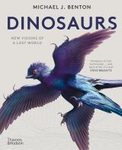![Ajax Mine Archaeocyaths Ajax Mine Archaeocyaths]()
Click to have a closer look
About this book
Customer reviews
Related titles
About this book
Due in large part to its distinctive high-fidelity dolomitic replacement of primary calcitic skeletal material, the classic Ajax Mine locality in the Flinders Ranges (Arrowie Basin) of South Australia was the subject of the most intense scrutiny by the pioneering researchers T.G. Taylor and the Bedfords. Ajax Mine has thereby become the type locality for the great majority of described Australian archaeocyath species and genera, and indeed, by a number of measures, represents the most species-diverse archaeocyath locality worldwide. From the host Ajax Limestone at Ajax Mine, a total of 82 archaeocyath, one acanthinocyathide and one radiocyath species, together with the coralomorph Flindersipora bowmani Lafuste in Lafuste et al. 1991 and the small skeletal fossil Tunkia incerta R. Bedford and J. Bedford 1936, are described in the present study.
New archaeocyath genera are the sajanocyathids Bizeticyathus carmen (R. Bedford and J. Bedford 1937) and Stictocyathus cavus gen. et sp. nov., lenocyathid Wronacyathus ayuzhui gen. et sp. nov., fallocyathid Maxdebrennius mimus gen. et sp. nov. and dictyocyathid Hillaecyathus contractus (Hill 1965). New species are Nochoroicyathus sublimus, N. ordinarius, Degeletticyathus dailyi, Subtumulocyathellus satus, Porocoscinus eurys and Paranacyathus arboreus. These, together with synonymies and new records of existing species, bring the net tally of valid named Ajax Mine species to 116.
The present population sample is dominated by three species: Polycoscinus papillatus (R. Bedford and W.R. Bedford 1934), Putapacyathus regularis R. Bedford and J. Bedford 1936 and Tumuliolynthus irregularis (R. Bedford and W.R. Bedford 1934). This collection was sampled from two measured sections through the approximately 150 m width of archaeocyath-bearing outcrop at Ajax Mine, both sections with base at (or near) the Flinders Unconformity. The sections thus overlie the established archaeocyath zones of the lower Hawker Group. Among the present collection, about half of the recovered species range through most or all of the composite section. Species suitable as guides for a zone with base at the Flinders Unconformity are Stapicyathus stapipora (Taylor 1910), Syringocnema favus Taylor 1910, Sigmofungia flindersi R. Bedford and W.R. Bedford 1936 and Tumuliolynthus irregularis. Among the remainder, potential guide fossils for zonal subdivision of the post-Flinders Unconformity interval (in ascending stratigraphic order) are Putapacyathus regularis commencing at 11.0 m, Kisasacyathus subacutus (R. Bedford and W.R. Bedford 1934) commencing at 17.2 m, and Kruseicnema gracilis (Gordon 1920) commencing at 19.8 m above the composite section base. Application of methods for estimating true stratigraphic ranges of these species yields mixed results, with the most stringent methods suggesting that all have true stratigraphic ranges commencing at the Flinders Unconformity. Detailed studies of additional sections elsewhere in the Arrowie and Stansbury basins need to be undertaken to test the biostratigraphic value of these proposed Ajax Mine guide species.
Customer Reviews


























